Network topologies are all about how the networking devices are connected. Suppose you are provided with a switch and 4 computers, there are numerous ways that these can be connected. The following diagram illustrates some ways of connecting them :
Therefore, network topologies is about studying and connecting such computers in different patterns. When we connect in different orientations,we have to particularly pay attention to the pros and cons of each method rather than just using a particular topology randomly. Therefore, this blog post will discuss about the different topologies, their pros and cons and where each of these topologies are typically used.
Star topology-
A star topology, as shown below, is a topology where all the computers are connected to one centralized hub or switch. Therefore, each of these equipment are given the same opportunity (direct) to contact the switch and all devices radially span out from the centralized hub or switch.
In a star network (or topology) as shown above, all communications should take place through the switch or the hub to which all the devices are connected to it. Unshielded Twisted Pair (UTP) cables (or sometimes RJ 45 cable, though not common) are used to connect all PCs to the switch or the hub.
When once device is malfunctioning you can simply remove it without disturbing the communication between other computers or degrading the performance of the system.
3. Network upgrades and degrades are easy -
Adding and removing devices is easy as that device does not affect the performance of other devices.
With regard to the privacy, faster communication, flexibility and the increased performance, star networks are an ideal network option for networking small offices or computer labs.
Therefore, network topologies is about studying and connecting such computers in different patterns. When we connect in different orientations,we have to particularly pay attention to the pros and cons of each method rather than just using a particular topology randomly. Therefore, this blog post will discuss about the different topologies, their pros and cons and where each of these topologies are typically used.
Star topology-
A star topology, as shown below, is a topology where all the computers are connected to one centralized hub or switch. Therefore, each of these equipment are given the same opportunity (direct) to contact the switch and all devices radially span out from the centralized hub or switch.
In this blog post:
In a star network (or topology) as shown above, all communications should take place through the switch or the hub to which all the devices are connected to it. Unshielded Twisted Pair (UTP) cables (or sometimes RJ 45 cable, though not common) are used to connect all PCs to the switch or the hub.
More topologies to discover:
Advantages of the star topology -
1. Flexibility -When once device is malfunctioning you can simply remove it without disturbing the communication between other computers or degrading the performance of the system.
2. Increased performance -
When one device wants to communicate with another, it can communicate directly without the interference from other devices. This also lead to less or no collision between data packets that are transferred between devices. Performance can be further enhanced by using a switch so that only the destination device will be addressed.
Adding and removing devices is easy as that device does not affect the performance of other devices.
4. Monitoring devices is easy -
Because of this centralized connectivity, the switch or the hub can easily monitor devices for any malfunctions or request for communications with other devices.
Due to the nature of connectivity, a star network with a switch provides a higher privacy capability compared to bus and ring networks.
Disadvantages of the star topology -
1. If the switch or the hub fails, the entire network cannot communicate -
If the switch or the hub fails, the whole network fails. An entire new installation needs to be done.
2. Expensive -
Are somewhat expensive to build because of switches or hubs used.
3. The problem with cables -
Requires more cable length that the bus topology. Also UTP cables are used which often suffer from less transmission speeds.
Usage -
When the number of devices increases along with the lengths of the cables, the network may slowdown. Therefore, star networks are usually used to connect a limited number of computers.With regard to the privacy, faster communication, flexibility and the increased performance, star networks are an ideal network option for networking small offices or computer labs.



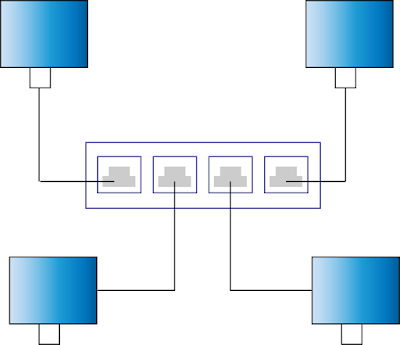
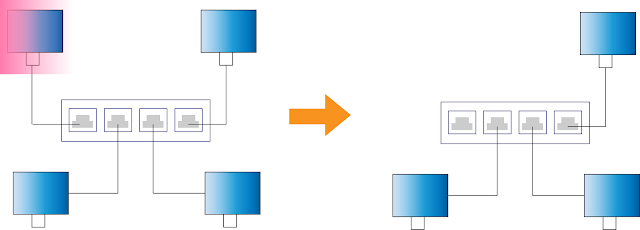
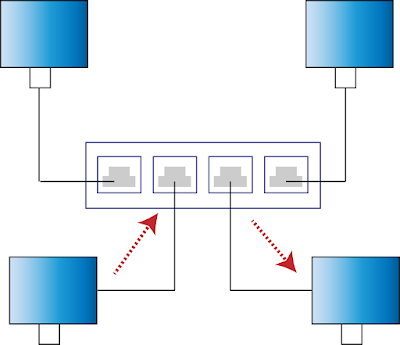

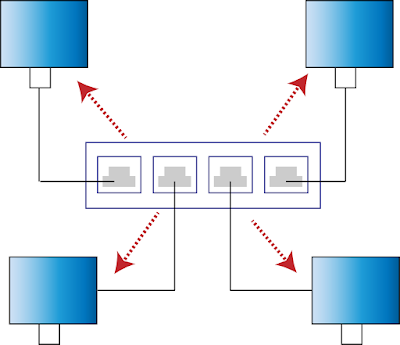

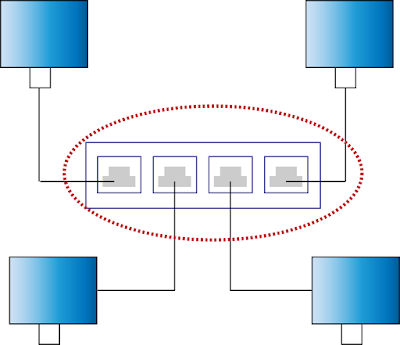
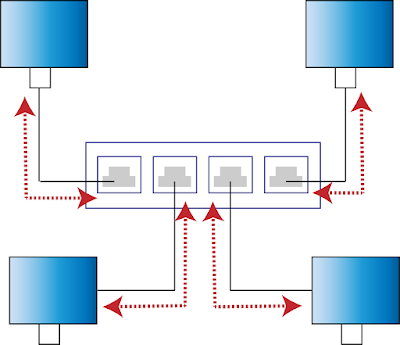


Comments
Post a Comment